#MediaandInformationLiteracy2021
Explore tagged Tumblr posts
Text
Blog entry #1
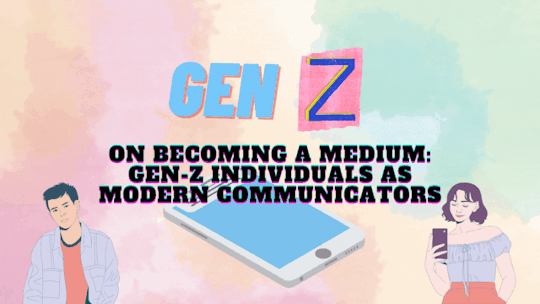
On becoming a medium: gen-z individuals as modern communicators
Generation Z, or Gen Z Like other generations, there are many factors that distinguish Zoomers, as they are commonly called. Most importantly, they are the first generation to grow up with access to the internet and digital technology, which has greatly influenced the way they interact with their environment. This change is evident in marketing. Because Zoomers have grown up with the Internet, their shopping habits are very different from other generations. Online shopping is nothing new to them and unlike other generations, they take it for granted.
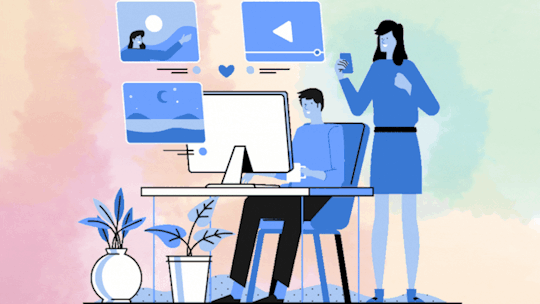
If you’re struggling to connect with Gen Z, your marketing tactics might be considered cheugy.
Anything that is considered worn out, untrendy, or uncool is cheesy. This is just one example of how Gen Z has created an entirely new language and new ways of communicating with the world. By creating their own vocabulary, using emoji to express emotions, and avoiding outdated means of communication to feel more authentically connected, Gen Z is rapidly adapting their personal and professional communication methods. changing. It influences how brands communicate with their target audience.
This is just one example of how Gen Z has created an entirely new language and new ways of communicating with the world. By creating their own vocabulary, using emoji to express emotions, and avoiding outdated means of communication to feel more authentically connected, Gen Z is rapidly adapting their personal and professional communication methods.
As the first generation to grow up with a phone, Zoomers are not only used to being constantly connected, but they are also used to being hyper-adaptive, creative, and deeply aware of the world around them. Not only do they prefer informal forms of communication, like texting or direct messaging, but they also rely heavily on acronyms, emojis, and slang to convey meaning.
References: https://www.theodysseyonline.com/communication-generation https://brands.wattpad.com/insights/gen-z-communication
3 notes
·
View notes
Photo

“On Becoming a Medium: Gen-Z Individuals as Modern Communicators”
Although, Millennials are “the most reached generation”, comprehending Generation-Z is important to success in higher education. While post-Millennials shared some characteristics with previous generations, they are distinct in their wants and demands, particularly when it comes to communication.
Who is Generation Z?
The Group of people born between 1995-2012 are Generation-Z and colloquially also known as zoomers. The beginning birth years are the mid-to-late 1990s, and the ending birth years are in the early 2010s. Gen-Z is interested in constant connectivity, more ways to communicate (chat, text, social media, and in-app comments).
Gen-Z understands the influence they have over the new world and has no time to waste when it comes to communication. They prefer to talk straight to the point when it comes to communication. As of today, Gen-Z prefers web-based communication such as Messenger, Zoom, etc.

How Generation Z Communicates
When it comes to reaching this generation, perhaps one word comes to mind: in Instant. They are the first generation of digital natives, thus they are accustomed to information availability as well as immediacy.
According to WB Partnership Zoomers, the first generation to grow up with a phone is accustomed to not just being always connected, but also to being hyper-adaptable, innovative, and acutely aware of their surroundings. They do not only favor informal communication methods such as texting or direct messaging, but they also rely heavily on abbreviations, acronyms, emoticons, and slang to express meaning. For example, emoticons have become a standard feature of textual communication. Gen Z has already begun to develop its emoji language. A single finger emoji could indicate that you're pointing at something, however, two fingers pointing in the same direction could indicate that you're shy or embarrassed. The crying laughing emoji has been replaced by a skull or coffin emoji.
First and foremost everything written concisely is bound to catch their attention (Gen Z). The TL;DR (Too Long, Didn't Read) manner of communication is a Gen Z specialty. If you don't communicate with this generation directly and visually, you won't be able to keep their attention. You'll also lose them if your communication doesn't use inclusive language. (think: gender-neutral).

Because technology has been present since most Gen-Z-ers were children, they take these tools and 24/7 mobile access for granted. As a result, Gen-Z is frequently referred to as a generation of tech-savvy digital natives; and, while this isn’t always the case, being more tech-savvy than prior generations does have an impact on Gen-Z’s communication patterns. Being Tech Savvy refers to one’s ability that comprises more than just “knowing” how technology works; it also includes “utilizing” such current technologies to increase productivity and efficiency.
When Gen-Z people appear at work, they are casual, precise, and concise on the things that they do. We Generation Z may be perceived as lazy or uncaring since we do not inform older folks when we are happy. Because smartphones enable such massive amounts of interactive information to be created and shared, Gen-Z spends most of their time on their mobile devices, even spending as much as nine hours a day. According to Katya Chamma “The Internet is the great highway of modern communication, free and independent.” At work, Gen-Z values authenticity and honesty, and that they are influencing their coworkers.
References:
https://www.keystoneacademic.com/news/communicating-with-generation-z-everything-you-need-to-know?fbclid=IwAR37l-kwZ9UT_99uU0Dmm6IsS9scFTHZyCC46x3wCx9JDzNCEjb4krk_Bho
https://www.cleverism.com/skills-and-tools/technology-savvy/?fbclid=IwAR1gBOTnHXM08rCUSG0xqxVMtYhkSWA89pimFZl0iPH4a7AkfD1Fd17M8Ms
https://genhq.com/jason-dorsey-shares-insights-on-gen-z-with-forbes-africa/
10 notes
·
View notes
Text
Delivering News in the Present Age

Have you ever wondered whether the news you're watching on TV, listening on the radio, or reading on the internet is accurate and reliable?
When we look back at our old news media and compare it to our current media, we can clearly see how it evolved over time. In the past, the news was transmitted by word of mouth, which was later replaced by a written medium known as a newspaper. The use of a newspaper allowed news to travel a much greater distance. On the other hand, news delivery in the present has been modernized, which means that news is now distributed through mass media.
According to the publishers of RAND Corporation as society moved from "old" to "new" media, news content has generally shifted from more factual and objective event and context-based reporting to reporting that is more biased, relies more heavily on discussion and advocacy, and contains more emotional appeals.
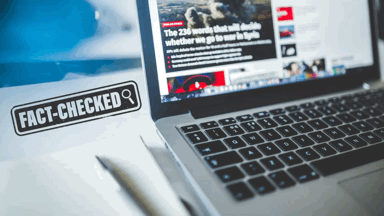
Delivering news in the present age change our ways to produce and receive various information. The way news is produced, transmitted, and perceived around the world has evolved tremendously as a result of technological advancements. More people use the internet to search for news than read a newspaper or wait for the evening news program. In a Statista 2021 survey, more over 70% of respondents from Kenya, South Africa, Malaysia, and the Philippines stated that they used social media as a source of news. The usage of technology in modern civilization has resulted in a world without borders. As a result, information sharing knows no bounds, allowing us to engage with a broader audience.
In this day and age, everything we need to know seems to be a click of a finger away. We've been exposed to a variety of information-containing materials, every single day. Despite the fact that the internet provides fast results, it also raises concerns about the accuracy, reliability, and validity of the information acquired.

The news headlines from all across the world can be alarming. They aim to elicit emotional responses from consumers. In an era when news spreads so quickly, it is often difficult to distinguish between what is real and what is false. Although there are some factors to take into consideration when searching for credible news on the internet, studying and understanding the media will aid you in finding a trustworthy source. While having so much information at our fingertips is terrific, it's critical to double-check sources and not trust headlines.

Combating and distinguishing false information is very vital not only to determine the factual information but the truth. We should be more responsible and careful on what we are reading online before sharing it to others. Nowadays, people tend to involve themselves in immediately believing in a certain type of article or news, without doing a fact-checking first. We should look for reliable sources of information and read the whole content comprehensively.
Not everything we see online is worth sharing. We should not be a victim, however we should help ourselves to know whether the type of news or article we are reading is accurate or not. In this way we can distinguish and disseminate an accurate information to every individual, because everyone has the right to know the truth. It is significant for us to participate in delivering high-quality and reliable information to all, and educating other people on how we check after receiving news in the modern times. That responsibility rests with all of us as we consider the future of providing high-quality, reliable, and factual information.
As the generation keeps on advancing forward, combating false information continues. Thus, it is crucial to be heedful of what you believe and share. We should remember that false information is harmful to our world, it makes the world less informed, and it erodes trust.
REFERENCES:
https://www.statista.com/statistics/718019/social-media-news-source/
https://www.rand.org/pubs/research_reports/RR2960.html
5 notes
·
View notes
Text
The Good And The Bad: What Can The Future Media Provide To The Next Generation?
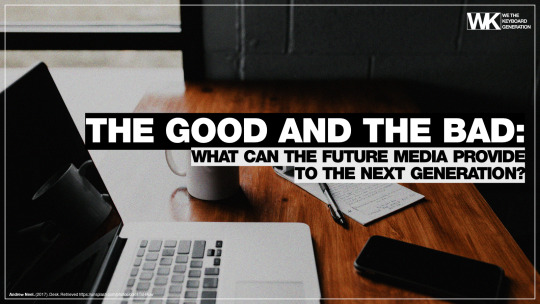
The Influence Of Media On The Future Generation
Media shapes our ever-evolving generations, continuously. Through the course of years, it is evident that most people find it useful in different areas of their concern. Media covers all means of communication, which people exchange, share and receive information for education, leisure, and exploration. Have you observed the difference between our current generation to those younger than us? These changes are proof of how influential the media can be. The new generation that was once inactive is now in the limelight of adapting and learning quickly. The advancing technology has helped people live in a connected world where communication and interaction from long distances and different time zones are possible. Young individuals are more exposed, aware, and informed of the issues that affect society, relevant events, and happenings across the globe. Innovation will be the constant equation considering the future of media. The future generation will wholly rely on media, making an immense impact on their lifestyles.
The Digital-Driven Development: Impact Of Pros And Cons
Nearly every element of modern life has been altered by digital technology. Travel, work, retail, entertainment, and communications are just a few of the domains that have seen a significant transformation in recent decades. It's becoming increasingly difficult to come across an electronic device or piece of machinery that doesn't use digital technology in some way. But what does it take to have a Digital-Driven Development
Society enjoys the benefits of digital transformation:
Social connectivity. Even if you are on the other side of the planet, digital technology allows you to stay in touch with friends, family, and work remotely.
Versatile working. The nature of work has changed as a result of technological advancements. As remote working grows more widespread, increased connectivity possibilities mean that many people now have significantly more opportunities to work from home.
Learning opportunities. Anyone with an internet connection now has access to a large percentage of the world's knowledge. Virtually delivered lessons and courses are now possible.
Automation. Machines are becoming increasingly intelligent as a result of digital technology. In some circumstances, people are no longer required to operate the machines, freeing staff to focus on more fascinating duties. In other circumstances, smarter machines imply higher safety standards or a better user experience.
Transportation. Many trains and planes already use digital technology to some extent. In the not-too-distant future, road vehicles such as cars and trucks will be totally automated.
Of course, a Digital-driven Development also has its downsides:
Data security. It is a major worry in today's digital environment. Because of digital technology, a massive amount of data (text, photos, and videos) is captured and stored. This information could belong to people or businesses who are at risk of identity theft.
Work overload. Daily, a considerable amount of data must be captured and processed, necessitating increased attention and concentration, resulting in distress and isolation.
Plagiarism and Copyright. The enforcement of copyright laws is difficult to achieve since the amount of information available on the internet is large, and tracking every piece of data is growing more difficult.
Diminishing job opportunities. Certain forms of work are now done by automated machines, but they were previously done by humans. More digital technology is being used in the workplace, which is lowering the chances of landing a job.
Social Isolation. They sometimes experience ambiguity and doubt as a result of their internet interactions. According to studies, many people suffer from depression and other mental illnesses as a result of a lack of real-life contact.
The Generation Alpha: Into The Ubiquitous Universe
The advances in technology that humanity has made throughout the twenty-first century are reshaping the earth and its inhabitants in both social and economic dimensions. New technologies define our pace of life and, to a certain extent, affect our personalities. Generation Alpha, the generation that will succeed Generation Z, is the ambition of this trend, as seen by the fact that they live through screens. Generation Alpha defines those who were born in 2010 who have fully developed in the digital world. The birth of Gen Alphas is just like the first iPad by Apple. Generation Alpha individuals rely on technology to help them discover the world. As a result, unlike past generations, they are less reliant on physical interaction with their peers. According to the Wired Consulting study Understanding Generation Alpha, "as technology advances, artificial intelligence or voice will become increasingly common methods of communication between humans and machines, as keyboards and screens give way to gesture-based interfaces and conversations between devices and humans."
Some factors shape the future of this generation:
Mobile devices. Smartphones and tablets directly shape Generation Alpha. According to studies, the population of young children owning devices is steadily growing among other different devices like tablets, ipads, computers, etc.
Virtual assistance. Data processing algorithms are a highly targeted habit market of this generation. Virtual assistants will not only be their guide but also be their literal caregivers of work. Since this generation is technological-driven, everything they do will be done with virtual help. The rise of such assistants like Alexa and Siri enables users to
Toys and other accessories. Toys with artificial intelligence that are perceived as pleasant and dependable broaden children's perceptions of what technology can achieve for them. As a result, wearables such as smartwatches or smart bands will become a part of their daily life in the future.
Conclusion
Digital transformation benefits businesses and other developments across industries by allowing them to upgrade legacy processes, expedite efficient workflows, boost security, and increase profitability.
2 notes
·
View notes
Text
"Unfolding the Bitter Truth: The Dark Side of Media and Technology"
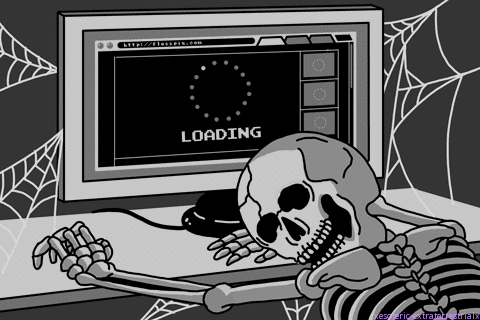
The world has changed because of digital technology. It is neither helpful nor dangerous by nature. The true consequences of technology are determined by how it is used. It has the ability to both inspire and catalyze change, as well as be utilized in ways that are harmful to society. In fact, technology has already become a fundamental part of our existence, and there is nothing we can do to eliminate it because it provides humanity with so much convenience. Today, we can observe a new relationship growing between humans and electronics. Without our trusty phones, computers, or tablets, it appears that most of us would be adrift in the world. The fundamental cause of this link is the progress of technology itself. The more technology advancements are created, the more we, as humans, are drawn to using them to make our lives easier. As a result, we are responsible for how much technology we are exposed to every day.
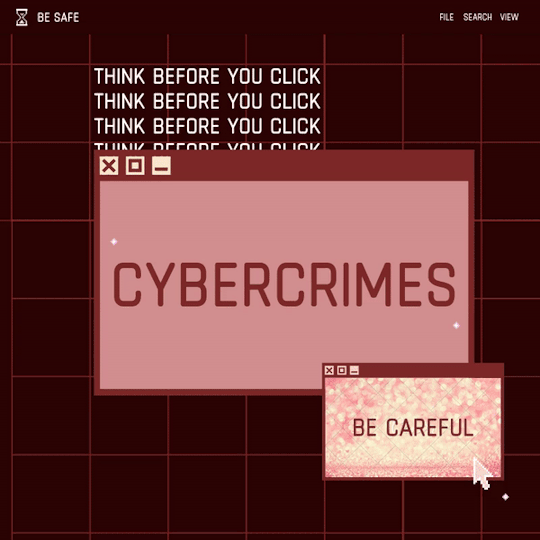
As the internet has grown in popularity, it has become an integral part of most people's everyday lives, and they would be unable to function or conduct their daily business or activities without it. It's incredible that we can now communicate and even see someone across the nation with only a few mouse clicks or a tap on our phone. People will always discover methods to exploit technology and utilize it with the goal of committing crimes, converting a positive instrument into a negative one, as technology advances and progresses seemingly for the better… But It also has some drawbacks in terms of the parallel advancement of negative technology usage. Malware is a set of instructions that has the capability of causing harm to any computer system or network. As a result, detecting malware, particularly novel malware, is a critical problem in today’s software security field. Traditional signature-based detection works effectively against known harmful programs but fails to detect new ones that lack signatures. Furthermore, techniques like code polymorphism and metamorphism, which malware writers use to obscure code, are typically seen as ineffectual using this approach.
Another kind of danger on the internet is something we tend to look over and underestimate. It is usually everywhere and takes the form of something enticing. This danger is what we call information, or more specifically, misinformation, disinformation, and “Fake news”. These dangers usually take the form of something very attention-grabbing such as stories about celebrities or more recently, news about the current pandemic and vaccines. These dangers not only implant lies and confusion among the masses, but also gives the people distrust to the media and could also harm a person because of the false information such as discredited sciences, implanted in their minds. These dangers are very vast and are all over the place, which is why scholars are still currently understanding it- such as how and how much it moves and also why people do believe these things. A lot of actions are currently being made to lessen and hopefully eliminate these dangers on the internet. Schools are currently teaching their students about media information literacy to help the students to look out for these kinds of dangers on the internet. Webinars and seminars are held to spread awareness about these dangers on the internet. However, despite all of these actions made, a number of people all over the world still need to be taught about how to have awareness of these kinds of dangers on the internet.
So is the internet bad for humanity?
The internet is a gift to humanity, however, coming along with its rise was the dangers that came along with it. The internet was made to help us, but dangers rose along within it. That is why we should all be careful about whatever we see and click on the internet. These dangers come in different forms and they all are mostly very enticing and convincing. These dangers presented may not be completely eliminated but they can be avoided. Researches are still ongoing to eliminate these types of dangers on the internet. Despite all the wondrous things that the internet has given us, we are not safe- which is why our current best weapon to defend ourselves is to be cautious and be literate of these ongoing problems.
Digital technology has provided us with comforts and conveniences that were nearly impossible merely a generation ago. People have taken advantage of the vast opportunities and freedom that the media has offered everyone, resulting in misuse and misinformation. The influence of social media platforms has shaped public opinion which concerns people with the issues arising in the media. There were concerned issues about Cyberbulling and Internet pornography. There are also others who are concerned about their privacy when digital trails like phone calls, email messages, and other data they have inputted on the internet can be exploited.
References: https://epthinktank.eu/2019/02/18/how-the-internet-can-harm-us-and-what-can-we-do-about-it/
https://www.techtarget.com/searchsecurity/definition/cybercrime#:~:text=Cybercrime%20is%20any%20criminal%20activity,networked%20device%20or%20a%20network.&text=Some%20cybercrimes%20do%20both%20%2D%2D,effect%20of%20cybercrime%20is%20financial.
https://www.cram.com/essay/Malware-Essay/F3X2SFHLCXXW
https://edu.gcfglobal.org/en/digital-media-literacy/what-is-fake-news/1/
https://guides.lib.uw.edu/c.php?g=345925&p=7772376
https://libguides.exeter.ac.uk/fakenews/consequences
https://journalistsresource.org/politics-and-government/fake-news-conspiracy-theories-journalism-research/
https://www.imf.org/external/pubs/ft/fandd/2016/09/wellisz.htm
2 notes
·
View notes
Text
"Media Evolution and the Changing World"

Blog #2
Media is a method of transmitting data from a communicator to information collectors. It has become a crucial aspect of human nature that permits people to thrive and survive in today's hustle world. As time passes, numerous eras have come and gone, and so have the evolution of media. In the past, information was shared down through word of mouth or messages scrawled on stone tablets and the Egyptian papyrus platform. The messenger in the 17th century, who was part of the media, accomplished this by riding a horse to the recipient's location. Letters had been developed to aid in this procedure. People with prior experience in message delivery were employed to deliver letters in various areas.
The media in the past merely disseminated information to others via newspapers, radios, and other tangible objects. They communicate by writing and sending long-distance letters that can take weeks, or even months, to arrive. However, the media is gradually developing, making people's lives considerably easier, particularly in the realm of communication. The development of Homo sapiens approximately a hundred thousand years ago is a suitable reference point for a discussion of technologically advanced humans in the 21st century.
TRIBAL AGE
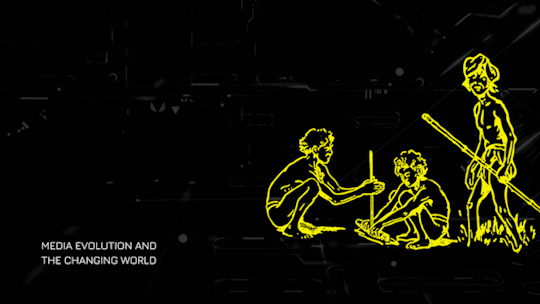
This is the period wherein people only utilized hand tools with no machinery. They depended on their sense of hearing, touch, and smell. Hearing, rather than seeing, aided conceptualization in this period as it enabled them to become more aware of their surroundings. This is crucial in the tribal age since these senses help detect what the naked eye cannot see. During this time, rocks or sticks are being used as a medium for them to communicate.
PRE-INDUSTRIAL AGE
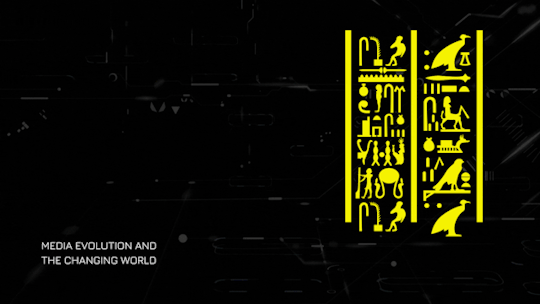
After years, the first period, which we refer to as the tribal age, was succeeded by the pre-industrial age. From being a period with an acoustic environment where the senses of hearing, touch, and smell were developed, to becoming the first period to be seen with evidence that the earliest civilizations had already refined the abilities to communicate information through writing and drawing. This is the period wherein the evolution of media has started. People came up with innovative ways to enhance their means of communication.
INDUSTRIAL AGE
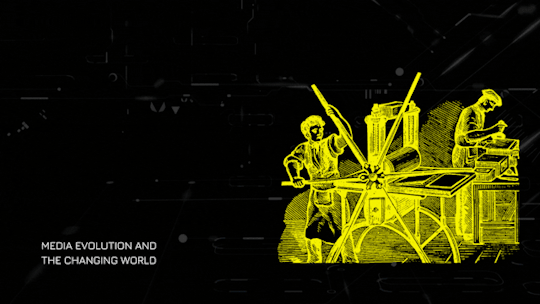
The pre-industrial age has given way to the industrial age. This is the period wherein the birth of machines took place, which also indicates having new materials to utilize in terms of communication. Media has been progressed at a different pace. The printing press, typewriters, telegraphs, telephones, and cameras were all invented during this period. This paved the way for the media to be more well known to people.
ELECTRONIC AGE
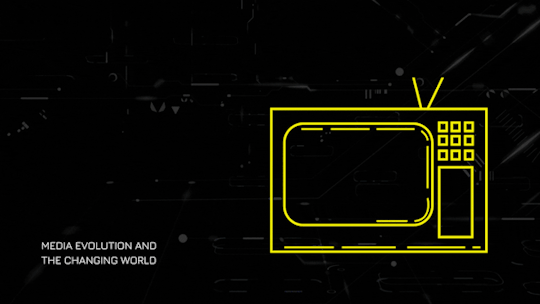
The industrial age has given way to the electronic age. This is the period wherein more advanced inventions were created. It paved the way for the development of electronic devices. As a result, mass media arose, allowing news to be disseminated in real-time.
INFORMATION AGE
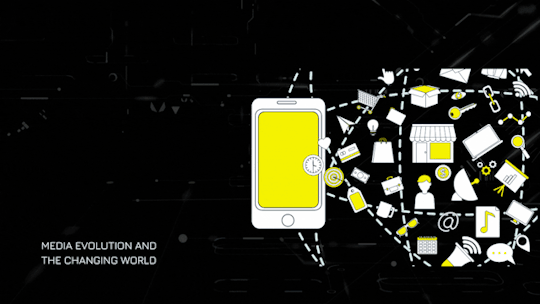
Finally, the information age has overtaken the electronic age. This is the period wherein the use of media has widely evolved. Various social media platforms were introduced due to the internet. The public now has the power to regulate the media. They are given the opportunity to express themselves and share whatever they desire. With the aid of modern technologies and internet connections, media use has become more widespread in recent years. Thus, allowing information to be disseminated in an immediate manner.
The progression of each period with the passage of time is evident. Each period is distinct because they possess unique characteristics. The evolution of media has created an impact on not only the world's progress but also the lives of countless people. They are introduced to a wide range of viewpoints that shape their perspectives and experiences of the social world. Given the power of limitless information from the internet, current events are no longer limited to print media, radio, and television. A lot of inventions have been created, and the means of communication are constantly evolving as well.
The information age will eventually come to an end. The world has revolutionized as a result of the internet, and people from all over the world may now communicate with one another. Therefore, it's worth noting that, as the world evolves, there will always be another period succeeding a certain period. In comparison to previous times, one may infer that the following periods will be more sophisticated. Thanks to the modernization of high-tech products and platforms, the current generation is the most technologically literate in history. However, if the historical pattern of advancements is taken into account, future generations are anticipated to be more technologically knowledgeable, with a higher ability to develop their expertise, comprehension, and awareness of certain matters.
All of us are exposed to the world’s dilemma of change. Evolving is equivalent to changing. It may take place in a wide variety of ways, and it is dealt with in a variety of ways as well. In this world, everything is dynamic and adaptive. As they say, the only thing that remains constant is change. But one thing is certain: we must never lose sight of the essentiality in the acceptance of change, for it is inevitable.
3 notes
·
View notes
Text
Delivering News in the Present Age
As time progresses, innovations have been rapidly approaching. We cannot deny the fact that the things we were so accustomed to will eventually change as time passes by. News in the past only involved newspapers wherein if you have not had the chance to buy the printed media copy you then may not straight away have the privilege to access the latest news. In the present age, we now have the privilege of conveniently accessing news, which enables us to be more updated.
Being in the era where the internet is present, it has given people a chance to easily acquire answers to their questions by just a click on the search tab and visit credible news online outlets. Delivering news nowadays could be in form of oral or via the use of written works.
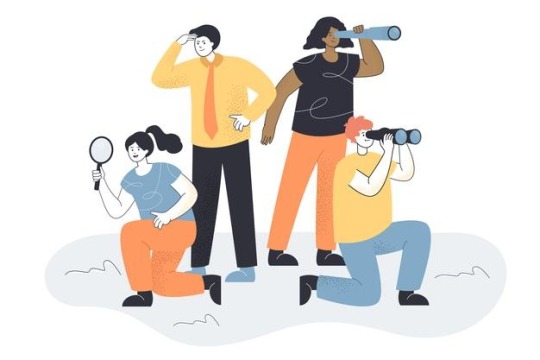
There are distinct and numerous ways of conveying news to the people such as through the use of Television news, which enables the individual to relate to the news they are watching and have somewhat a connection, it enables the person to right away recognize the facts and necessary information he/she learned. Another way of delivering news is through the usage of the most prevalent outlet which is through online news publication for instance the utilizing of websites in disseminating information.

Affirmative that in the present it has been also an advantage to most individuals to have access to news in a faster way, however, it cannot be denied that having many news outlets could lead to inaccuracy of information. Having the freedom of directly relating to news is also alarming since people could instantly publish the news on different platforms even if the news context isn’t that thoroughly examined. Upon the encounter with a certain article, the reader or audience should also be extra careful because if not, he will not be able to distinguish between fake news and real news. He then will be blinded by the misleading introductions and may be led to sharing news that is not reliable and valid. Therefore, despite being either the publisher or reader, we should be responsible and literate individuals.
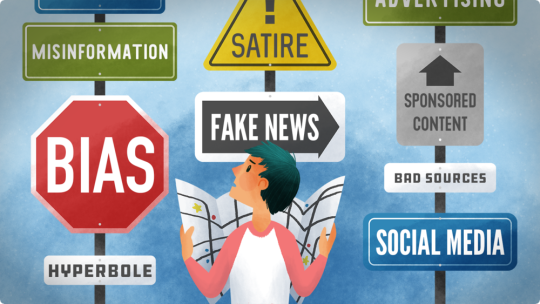

2 notes
·
View notes
Text
Delivering News in the Present Age
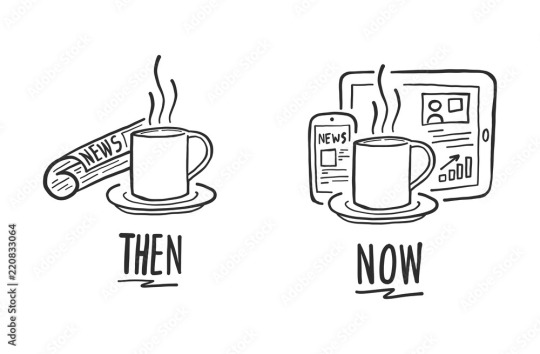
Media types fall under two broad categories: traditional and new. Print and broadcast formats are considered traditional media, whereas digital formats such as blogs and podcasts are considered new media. News content has transitioned from the more objective event and context-based reporting to reporting that is more subjective, depends more heavily on argumentation and advocacy, and includes more emotional appeals as society has moved from "old" to "new" media. It changed the way we interact, learn, shop, and sell, as well as how we are informed about current events and how we form opinions about them.

Word of mouth was the primary source of news before the invention of the printing press. The objective of news stories in newspapers is to enlighten readers about what is going on in the world around them. Now that we are in the present, We now have all the information we need at the touch of an app and most people now get their news information online, specifically from social media. With over 2.4 billion internet users, social media has surpassed traditional media as the primary source of news online. Nearly 64.5 percent of users get breaking news from Facebook, Twitter, YouTube, Snapchat, and Instagram rather than traditional media.


Due to the speed and pervasiveness of these communication channels, many stories break first on social media. However, sometimes the news turns out to be "False News," which is eventually exposed as such. Traditional news organizations must rely on various sources to verify information, which maintains its accuracy. When delivering news in the present age, reports may be made up to inflame public opinion or, conversely, to minimize the impact of an event.
Delivering news today must be more factual, credible, and unbiased in order for us to determine that these types of news are providing accurate information to the public. There are at least 2.4 billion internet users across various media, but not all of them use media to empower and influence others. Others use it to degrade, bully, and spread hate across the feed, and this is how news is delivered in the modern era. Individuals should be more responsible and cautious about what they read online before sharing it with others. Individuals have a tendency to believe in a specific type of article or news right away. It should not be done in this manner. Individuals should assist themselves in determining whether the type of news or article they are reading is accurate or not. We should continue to be cautious about what we read in new media news. Because not all of the news on social media these days is true. We should continue to watch reliable news on television and read relevant articles. Social media usage is one of the most popular online activities. In 2020, over 3.6 billion people were using social media worldwide, a number projected to increase to almost 4.41 billion in 2025. So we need to educate people to think before they post and know what they are reading online.

Receiving news back then was harder compared to the present. They had people on bikes, and sometimes just little schoolboys, going from place to place delivering news/messages to others walking on every home just to deliver some news and throw a newspaper in front of their houses. Some towns or barangays rang bells and shouted the news to the people. They also used broadsides, which they would nail the news to posts and buildings in order to enlist people in their communities. But today, People now get their news through their devices with the use of the internet and technology. We have television, an online website, texting, and calling friends.
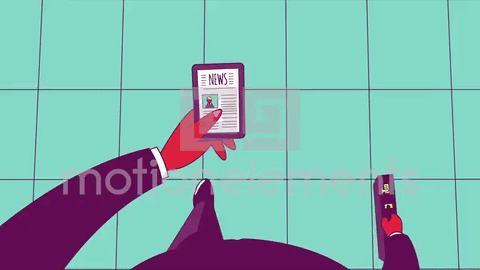
Although social media, the internet, and technology can be good mediums to receive news faster, it also has its drawbacks such as the risk of receiving fake news that we need to be careful of. Of course, you will come across bogus articles and information; all you have to do is make sure that the material you receive comes from a reliable source. In theory, the information should be correct as long as the source can be trusted.
References:
https://www.statista.com/statistics/278414/number-of-worldwide-social-network-users/
http://blogs.egusd.net/eettalfonso/2011/05/16/5-comparecontrast-how-we-get-the-news-in-the-past-and-currently/
https://www.google.com/search?q=difference+between+past+and+present+news&tbm=isch&ved=2ahUKEwjWuorD-KDzAhU5JaYKHWJgDE8Q2-cCegQIABAA&oq=diff&gs_lcp=CgNpbWcQARgAMgcIIxDvAxAnMgcIIxDvAxAnMggIABCxAxCDATIECAAQQzILCAAQgAQQsQMQgwEyCwgAEIAEELEDEIMBMggIABCxAxCDATIFCAAQgAQyCwgAEIAEELEDEIMBMggIABCABBCxAzoFCAAQsQM6BggAEAoQGFCAH1j3NGD6OmgCcAB4AYAB0AKIAf4KkgEHMC42LjEuMZgBAKABAaoBC2d3cy13aXotaW1nwAEB&sclient=img&ei=0KhSYdaSC7nKmAXiwLH4BA&bih=625&biw=1366#imgrc=2IuJHa395mobAM
https://www.forbes.com/sites/nicolemartin1/2018/11/30/how-social-media-has-changed-how-we-consume-news/?sh=7815c3933c3c
3 notes
·
View notes
Text
"Media Evolution and the Changing World"
How important it is to study the evolution of media?
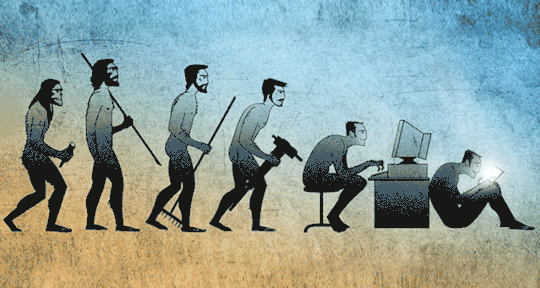
It is important to check the evolution of media so as to grasp how change in technology changes society. once you consider the analogue media technology of the 20th century it gives you an understanding of the differences between the society of the published era and our current situation. It's easier to determine how particular ideas and values may be so dominant after you understand how expensive and complex mass media was. This centralized control of the media. Alternative viewpoints did not have access.
The age of the tribes or the tribal age (1500 BC – 1500 AD)
“In tribal age hearing is believing” Tribal age is that the first period in history, as per McLuhan. within the Tribal Age, Ear is that the most vital sensory organ for obtaining information. It enables people to instantly receive information. All-round sound quality also promoted the community, and language was mainly a community experience. The sound feel isn't conducive to privatization; because you whisper or whisper directly into someone’s ear in order that others can’t hear it. Words with no substantive meaning, direct and vivid, only exist at the instant of hearing, because this era requires personal and intimate interaction, and hearing plays a key role during this era. this can be also called an acoustic era because the senses of hearing, touch, taste, and smell were way more strongly developed than the power to visualize. In natural situations, hearing is more important than seeing since it permits you to be all the more quickly mindful of your environmental elements. With sight, we are restricted to heading and distance. we will just detect what's obviously before us. On the off chance that a preying creature is behind us or taken cover behind a tree, we are pitifully unconscious without affectability to sound or smell. Hearing and smelling provides a feeling of that which we will not see, a big capacity within the Tribal age.

The pre-Industrial Period/ Pre-Industrial age (Pre-1700’s)
Pre-industrial age or before 1700. Cave paintings or parietal art. Some theories suggest that cave paintings served as a means of communication, while others suggest that they served a religious or ceremonial purpose. Animals are a popular topic that produces the most amazing visuals, and the paintings are very similar across the world. Humans are typically shown as hand stencils created by blowing pigment onto a hand held against the wall. Clay tablets in Mesopotamia are written on a wet clay tablet and then dried in the sun or air. If they are done writing on the tablet they can erase it and make a new one out of it.
Papyrus paper was used for writing in ancient Egypt, and it may also refer to a text written on sheets of such material that are connected side by side and wrapped up into a scroll, which is an early form of a book.
In Rome, the Acta diurnal was used for public notices and announcements such as births, weddings, and deaths. Legal, municipal, and military notifications were among the other types of Acta. Only officials were allowed to access Dibao, which included official notifications and news. They declare it orally or in writing. Handwritten or engraved wooden blocks were used to print them.
Codices Maya Professional scribes working under the patronage of deities such as the Tonsured Maize God and the Howler Monkey Gods produce folding books.

Industrial Age (1700's - 1930's)
Between the late 18th and early 20th centuries, the Industrial Revolution saw tremendous development in mechanization, industrial output, and societal transformation.
New technologies have greatly increased the speed with which people and commodities may be transported. Between Liverpool and Manchester, the first intercity railway was completed in 1830. The railways made it possible to carry more freight at a lower cost and in a shorter amount of time. Traveling from London to Manchester took four days in 1700, but only four hours in 1870.
The use of steam engines. The steam engine's development was crucial to the Industrial Revolution's success. It enabled steam trains, as well as steam-powered pumps and machinery, increasing labor productivity.
The Agricultural Revolution made it possible to produce more food with fewer farm laborers, resulting in excess employees who could work in industries. Crop rotation, selective breeding, economies of scale from larger farms, and improved transportation all contributed to this agricultural revolution.
Global commerce expansion. Britain's excellent shipping capability and Empire, which provided raw materials, aided them.
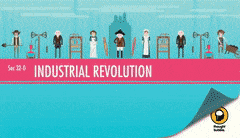
The Electronic Age: (1930s – 1980s)
The industrial age and the electronic age are two different periods of civilizations. These civilizations are thought of in schools as part of the curriculum in basic computer study in Junior secondary schools. This article covers all that students need to know concerning the industrial age and electronic age.
The industrial age is a period of social and economic reorganization. Remember the stone age, the period when crude tools were used. During the stone age, production was done by the exertion of human efforts.
Although industry and machinery are an important part of today's world production. Another important factor was considered in the late 1950s. This vital factor of production, also known as the digital revolution, is known as the electronic age.
The electronic age is also called the information age or digital age. It started in the 1970s and continues to this day. This is a stage of transition from a traditional industry to an information-based economy.
The electronic age is the information age, and electrical switches make it possible. Today can no longer be fully described as the electronic age. We can classify this time as Internet of Things (IoT) time. Because we are gradually relying on robots and machines to perform functions previously performed by humans.
With the development of artificial intelligence and machine learning, machines can learn human emotions. This enables them to make decisions that humans should make, thereby supporting production.
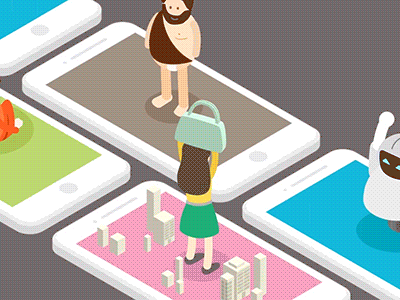
Information Age (1900s- 2000)
The Information Age refers to the idea that information availability and control are the distinguishing characteristics of this new phase in human history. The development of personal computers ushered in the Information Age, also known as the Electronic Age, Digital Age, and New Media Age. The "information era" began in the 1980s. Big businesses used mainframe computers, which allowed them to handle information (although laboriously) and perhaps make it available. That lasted until Google came up. Google performed something unique in history: they "broke" Goodhart's rule. That is, their sole metric for determining the relevance of a web page became a target, which Goodhart claims indicates it is no longer a quality metric. They become authoritative after a few years of excellent programming, a tidy model, great luck, timing, and a fanatical concentration on search quality. That was the Information Age's final game—Google won and received a little reward from the whole planet for making the world's information available for free. Now we're approaching a new era with unrestricted access to information, the ability to construct virtual worlds, machines that are smarter than people, and sci-fi like robotics, among other things.
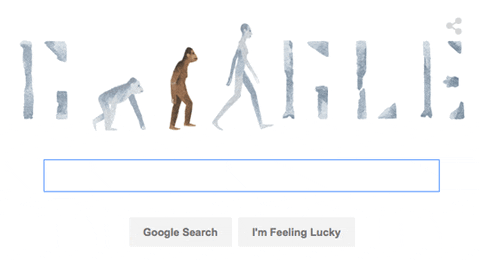
Reference:
https://the21stcenturylearners.wordpress.com/2018/10/08/the-tribal-age-acoustic-age/
https://andy15blog.wordpress.com/2017/07/25/pre-industrial-age/#:~:text=Pre%2Dindustrial%20society%20refers%20to,help%20perform%20tasks%20en%20masse
https://rohartpogi.wordpress.com/2017/07/23/industrial-age-1700s-1930s/?fbclid=IwAR0fBZJ9IWnj0ubdSN0c_0v6TGlkxplAJD6P203ImmFaBnk2JpKWY6Dz6m0 https://en.wikipedia.org/wiki/Printing_press https://en.wikipedia.org/wiki/The_London_Gazette https://en.wikipedia.org/wiki/Typewriter https://en.wikipedia.org/wiki/Telephone http://precinemahistory.net/1890.htm http://www.encyclopedia.com/literature-and-arts/performing-arts/film-and-television/motion-pictures https://en.wikipedia.org/wiki/Sound_film https://en.wikipedia.org/wiki/Telegraphy https://en.wikipedia.org/wiki/Punched_card
https://www.kmacims.com.ng/industrial-age-and-electronic-age/
2 notes
·
View notes
Text
“On Becoming a Medium: Gen-Z Individuals as Modern Communicators”
We are all Mediums, fully capable of learning to bridge the gap between this world and the next. Just like any other skill or ability, connecting with the other side can be taught, learned, and mastered. The best ideas can change who we are. We’re an open platform where over millions of people come to find insightful and dynamic thinking. For today’s students, growing up with the emerging technologies at their fingertips has blurred the lines of work and social, of study and entertainment, of private and public. They now live in an open book environment – just a few clicks away from any information. They connect in a border less world across countries and cultures, and they communicate in a post-literate community where texts and tweets are brief, and where visuals and videos get the most cut-through. We have here the Generation Z or Gen Z are young professionals who were born between the late 1990s and early 2010s. They grew up with technology, the internet, and social media, which sometimes causes them to be stereotyped as tech-addicted, anti-social, or ‘social justice warriors’. With their skills on technology, a responsible Gen-Z contributes peace and positive characteristics through educational and informative posts based on facts. A conscientious and responsible Gen-Z applies, imparts and reflects values as it utilize technology with his/her daily activities such as communicating with family members, friends, schoolmates, teachers and other people in the community or social media. Gen-Z capitalizes their being tech-savvy if they help the government inform the society about its programs, if they help stop fake news on the net, if they provide helpful tips/information to the depressed because of pandemic, and if they do not use the technology, the internet or social media to destroy other’s reputation or revenge on someone. Being a Gen-Z is an advantage if competence in technology is used for the advancement of truth, equality, values and optimism.
Generation Z, or Gen Z for short, is the first generation to grow up as digital natives, a generation that is fast enough to keep up with advanced technology and innovations. The first generation of digital natives, individuals who grew up with the internet as an important part of their daily lives. Since they spend most of their time in front of the screens, this generation has developed a unique communication style preference, which has highly influenced, how individuals interact with their environment. According to research by cloud mobile solutions provider LivePerson, 65 percent of Generation Z prefer to communicate online rather than in person when at home. Most of this age group uses their devices mostly to interact with friends and family and for entertainment. However, the number differs significantly between men and women, with considerably more male Generation Z members engaging in gaming and much more female Generation Z members chatting and texting. The social preference of Generation Z is Instagram, Tiktok, Twitter, and Snapchat. These social platforms are constantly growing in popularity, making them the best choice for reaching Generation Z. Millennials, on the other hand, prefer social platforms like Facebook and Instagram. Generation Z spends most of their time through mobile devices even though smartphones are the medium through which such an enormous amount of interactive content can be created and shared. You may connect with Generation Z in a way that is personal and relatable to them. Besides, they learn information instantly and loses interest just as quickly. Gen Z has a strong sense of community and actively participates in groups created around shared interests on different platforms, including Reddit and Discord, which are still among the most popular community-building tools. Gen Z is the most influential generation, its population is continuously expanding over time, and as they mature, their influence will only grow bigger. Those qualities will eventually be pass on to their children. That's why it's important to remember this particular group.
Reference
https://online.ndm.edu/news/communication/evolution-of-communication/
https://risepeople.com/blog/gen-z-communication/
https://mccrindle.com.au/insights/blog/generation-z-defined-5-characteristics-todays-students/
https://www.keystoneacademic.com/news/communicating-with-generation-z-everything-you-need-to-know
2 notes
·
View notes
Text
Media Evolution and the Changing World

When various media sites began to emerge, internet usage grew in popularity. It continues to produce new platforms that anyone can easily access. Anything you wish to get can be reached with just a click of your mouse. Imagine having complete control over the Internet but before we did achieve this freedom our media did evolve from time to time, so let see how our media did evolve.
According to AKN Production, we are designing and modifying the message as it evolves with the medium throughout time. How? We've all become the Medium since we're all connected via the Internet. The term "media" has undergone numerous changes, including "mass media" (broadcast television, movies), "interactive media" (games, websites, apps), and "cross-media" (Transmedia), Multimedia, New Media, Social Media, etc... but these are just different mediums. What technology and the Internet have done is allowed us all to be a part of the media without having difficulties.

MEDIA EVOLUTION
Media has been through a lot of processes from using only the sense of hearing (Tribal Age), the invention of paper (Pre-Industrial Age), the widespread production of newspapers (Industrial Age), the first electronic computers and television, the use of smartphones (Electronic Age), and also the new way of conveying information via technology and social media platforms (Information Age).
Tribal Age (According to McLuhan, it is the 1st period in history)
Tribal Age, according to McLuhan, is an acoustic environment where the senses of hearing, touch, and scent were formed. Hearing helps you to be more aware of your environment in the tribal era than sight. Hearing and smelling offer a sense of things we can’t see, which is important in the tribal period.
Pre-Industrial Age (1500 B.C. - 1500 A.D.)
Between the usage of the first stone tools and the present, there was a period of human activity known as prehistory.
The development of writing systems, the first of which appeared 5,300 years ago, occurred 3.3. Million years ago. Technology that precedes the written word. History is both the study of the past through the use of written records and the record itself. Prehistoric (meaning “before history”) refers to everything that existed before the earliest written chronicles of history, including early technology. The technology originated with the first hominids, who used stone tools to light fires, hunt, chop food, and bury their dead around 2.5 million years before writing was invented.
Industrial Age (1700s-1930s)
The Industrial Age is a historical period marked by the replacement of hand tools with power-driven machines such as the power loom and steam engine, as well as the concentration of industry in big institutions, which began about 1760 in Great Britain and later in other nations.
Electronic Age (1930s-1980s)
The transistor’s creation signaled the beginning of the electronic age. People began to exploit the transistor’s power, which resulted in transistor communication being more efficient.
Information Age (1900s-2000s)
The Information Age, also known as the Digital Age, is an era in human history marked by a change from conventional industry to an economy centered on information computerization, as a result of the Industrial Revolution’s industrialization. With the introduction of personal computers, gadgets, and wearable technology, the internet cleared the path for the advancement of microelectronics. In addition, speech, picture, sound, and data have all been digitized.
The list of media tools could go on for pages, and technology is changing at such a breakneck pace that many industries, including corporations and news organizations, are struggling to stay up. Newspapers, firms, governments, and other forms of leading institutions in the conventional world merely had to disseminate information, which people would read or look at. According to Inquiries Journal many traditional and non-traditional news organizations report and comment on how the Internet and social media, particularly social networking, have begun to have a significant impact on news organizations and how they operate. Although newspapers are currently facing a dilemma in terms of how to make journalism profitable in the digital age.
Why is MEDIA important in today’s society?
With each passing by, today’s society becomes more socially focused. It’s not just a fleeting fad; social media is here to stay.
The media is an integral aspect of our lives and has a significant impact on our society. Because of the high level of connectedness that exists throughout the world, the relevance of media is rising by the day. As a result, all must critical that all of us become conscious of the media’s influence. This enables us to evaluate all of the information we get on a regular basis.
One of the reasons why media is important is because it’s one of the ways to distribute information. Its importance in industrialized countries is worth noting because it is the primary source of informing the public about political concerns and current events. It's also one of the most important pillars of entertainment.
Although the media is an important element of our culture, too much meddling in everything is unsettling. In certain cases, like what Chamzad said, unimportant news is given so much detail and priority for the goal of a bigger income that the true news is rarely noticed. Despite its intellectual bias, the importance of media cannot be overstated, especially in this age of globalization and liberalization. The media's jobs and responsibilities are growing every day, and there is still more to be done for the development of society. So always do things for the betterment of everyone and remember that "If you are not part of the solution maybe you are part of the problem." Be responsible when using media platforms, since we are all creators of media and its future.
References:
https://www.sutori.com/en/story/evolution-of-traditional-media-to-new-media--BkcHVPKVx3vjJSBvcFEGxhb4
https://evolutionofmediaorg.wordpress.com/2016/09/06/tribal-age/
https://impoff.com/importance-of-media/
https://www.ssim.ac.in/blog/role-of-media-in-society/
http://www.inquiriesjournal.com/articles/202/the-social-media-revolution-exploring-the-impact-on-journalism-and-news-media-organizations
https://www.googlre.com/445664-argumentative-writings-and-competition-essays-the
6 notes
·
View notes
Text
The Good and the Bad: What can the future media provide to the next generation?
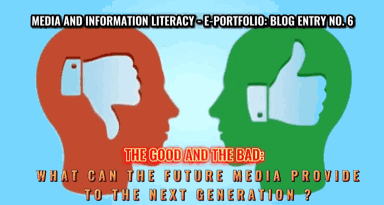
From time to time, the evolution of technology has acted as an extended hand in our lives. As this evolves, so does the efficacy of service. Since this evolution will result in a noticeable improvement in preparing itself for its future appearance as media, it will provide more possible performance that can be done online, as well as more platforms that will serve and give space for the needs of the next generation.
Every generation is shaped by the technological advancements made at the time. In today's society, social media is more popular than ever before, but its impact is never more visible than on the next generation. While young people may not recognize anything other than the enjoyment of being able to share experiences and engage with others, they should think about both the negative and positive consequences. Due to the rapid increase of social media use in today's society, the future media will be the most evident factor affecting how the next generation thinks of themselves. Technology is progressing at a breakneck pace these days, and given the last century or so, it's not difficult to predict what the near future holds. If it weren't for the advantages, the media would not grow at such a quick pace.

The way people receive and distribute information is dominated by the media. No one can deny that digital media has a significant impact on our society, positive and negative. Out of 10 young people, 9 individuals are increasingly exposed to key world events and topics that influence society today. This can drive individuals to become more active, actively engage, and make a positive difference (Statista Research Department, 2021).
It is hard to overlook that social media can aid political change by disseminating information and mobilizing groups of like-minded individuals. Unlike in the past, when teenagers rarely watched or read the news, they are now more informed than ever owing to social media hubs, with breaking news frequently being released on sites like Facebook. The social and professional benefits of social networking platforms, of course, cannot be denied. Online teens can deepen friendships and strengthen channels of communication by being able to communicate instantaneously with pals not just in their immediate area but also in those all over the world. They can even meet new people from different countries and learn about other cultures, broadening their cultural horizons. As well as bringing to light the challenges and concerns that have been ignored, we as a community can work together to bring justice to these issues.

Unfortunately, there must be a negative to every positive, and many young people are unaware that social media platforms have drawbacks as well. Teenagers today greatly underestimate the amount of personal information they post online, putting themselves at risk of third parties gaining access to facts about their lives, which might be exploited against them or lead to them becoming a victim of cybercrime. Young people might unknowingly make themselves victims of real-world crime by posting details of themselves. With nearly 800,000 young people claiming to be harassed through Facebook, cyberbullying is becoming a prevalent concern for teens with an active social media presence. In the Philippines, cyberbullying and cyberviolence has been at an all-time high, the number of cyberbullying incidents was highest in Region 4-a, with approximately 92.4 thousand victims and one-third of the cyberviolence experienced by Filipino children is verbal abuse and online sexual abuse via the internet (Statistica, 2019).

Media innovation continues to erode people's natural communication abilities and working knowledge. The percentage of illiterate people — those who can read but choose not to – is rising. The difficulties we face are complicated and interrelated. They are further muddled by lazy, bloated media and readers, as well as a massive established industry anxious to stay in power as cheaply, efficiently, safely, and profitably as possible. Individuals' anxiety about online political division, security and privacy concerns, bullying/trolling, loss of independent agency owing to platform providers' lack of control over what they are served, and other psychosocial stress contribute to this cognitive shift. Another unappreciated disadvantage of overusing social media is the loss of face-to-face interaction with friends and family. Low self-esteem, eating disorders, depression, and feelings of loneliness can all result from a lack of physical social contact, which can be hard to overcome.
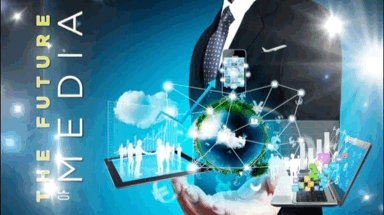
If we imagine how the media will be in the future, there is a good chance that we will have a paperless and all-digital media world. Everything will be accessible online, and perhaps artificial intelligence will coexist with us. When you think about it, our jobs will be easier and faster, and every piece of information that appears on our screens will be as quick as a snap of a finger. Evolution is all around us, but not all of it is beneficial to us. As a result, we must learn to adapt while also accepting responsibility for our actions. Prioritize connecting with people who are physically there with you, which helps relieve stress and make you feel better, healthier, and more optimistic. We must not allow the media to continue to darken as more people become exposed to media and technology. Let us shine a light on its darkness, which is meant to unite us rather than divide us.
While social media is unlikely to go away soon, it is necessary to educate the next generation about the benefits and drawbacks of utilizing these platforms so that they can avoid the risks and thrive on the positives.
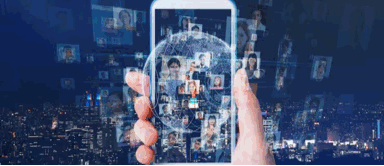
Sources Cited:
Arke, E.T. (2020). Media literacy: History, progress, and future hopes. In Dill, K.E. (Ed.) The Oxford Handbook of Media Psychology. Oxford: Oxford University Press. (96-108).
Austin, E. W., Kallman, D., & Kistler, M. (2017). Media literacy approaches for improving youth and family health. In Abreu, B.S., Mihailidis, P., Lee, A.Y.L., Melki, J., McDougall, J. (Eds.) International Handbook of Media Literacy Education. New York: Routledge. 65-82.
https://themanifest.com/social-media/how-different-generations-use-social-media
https://www.securitymagazine.com/articles/96134-tackling-the-cybercrime-pandemic-in-2021
https://www.helpguide.org/articles/mental-health/social-media-and-mental-health.htm
https://www.be-utd.org/social_media_influence.html
Photos from:
https://www.google.com/search?q=two%20faces%20in%20media&tbm=isch&hl=en-US&tbs=rimg:CZAhaPmlxhEhYQZ6DDskNrjksgIGCgIIABAA&prmd=ivnx&rlz=1CDGOYI_enPH913PH913&sa=X&ved=0CBIQuIIBahcKEwjAyKzKyqH0AhUAAAAAHQAAAAAQBw&biw=375&bih=553#imgrc=uC4iBQhHPFqvNM
https://digitalwellbeing.org/social-media-and-the-happiness-paradox-its-not-you-its-them/
https://www.alphr.com/life-culture/1009873/how-to-make-social-media-like-yourself-again/
https://www.deepanshugahlaut.com/blog/5-ways-make-customers-happy-social-media/
3 notes
·
View notes
Text
On Becoming A Medium: Gen-Z Individuals As Modern Communicators
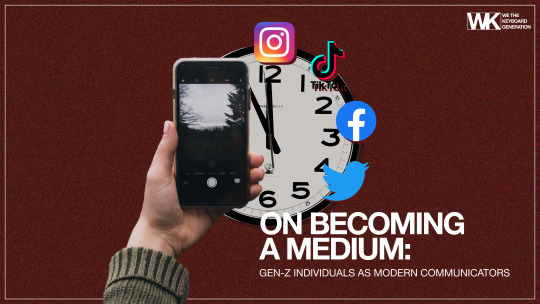
Greater Communication Leads To A Greater Generation
Communication establishes relationships that make organized possibilities. Throughout different ages, communication in their unique ways is used to pass down information, both verbal and non-verbal means. Of the cave paintings of the Prehistoric Era, down to Classical arts of the Renaissance. The works of messenger and the impact of gossip of the Medieval Era. The establishment of postal networks and telephones of the Early Modern Era, until now to the Present Modern period of Internet and Online technology, the introduction of the Modernized Communication Era. The generation, also known as digital natives or digitally literate, can grow up and adapt to the internet and portable digital technologies at a young age. The evolution of communication depicts how messages and ideas were undertone or significantly conveyed. Every thought uttered has purposes or objectives to reach. There is always a reason when communicating a message to another. It may be to inform, entertain, or persuade them. Whether your purpose is intended to be good, misunderstandings happen too, so it is wise to deliver the message with utmost clarity and precision.

The Power Of Communication
Activism is one way to fight for a more equitable social system that can benefit everyone. It gives the voice from the voiceless and amplifies the voice from the suppressed. Activism is a movement that gives the power to communicate the struggles over life and helps overcome feelings of helplessness and hopelessness. Evident reports show substantial and manifest studies on how Gen-Z has changed activism: from political towards environmental. Without the power of communication, none of the calls of people will be heard and addressed. In democratic countries, freedom of expression and speech is inscribed to seek and adhere to the needs of the people in these dynamic societies.
Generations and generations have passed, yet, taboos and social issues are nevertheless at the bottom focus. Philippine culture obliges their children to follow their parents or any elderly advice because they believe voicing out is a form of disrespect and stepping out before them, fearing the youth turning against them. These are one of the reasons why Gen-Zers are more vocal about their opinions and asserting their rights. They seek social justice amidst the repercussions, subjects preventing the youth from voicing them out as they are still young to seek a voice.
While activism requires collective communication, the aspect of leadership requires another greater responsibility. While a good leader holds the vision of the group, a more prominent leader empowers individuals through effective and accurate communication by building together their strongholds to efficiently perform the group's objective. Achieving success and target objectives requires a powerful and convincing communicator. Communication enables leaders and members to share what they have and what they expect from others.
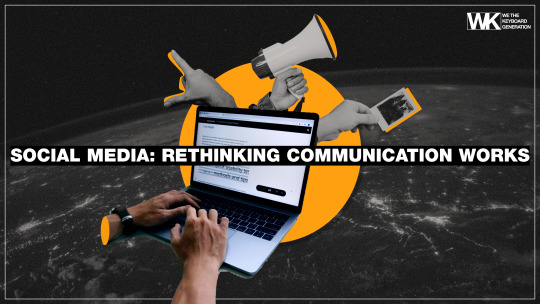
Social Media: Rethinking Communication Works
While every new generation had its share of technological, economic, political, and social differences, no other period in human history could connect people around the planet, allowing individuals to be fully engaged in various relevant topics. As modern communicators, social media is a commonly used and helpful medium of communication and information library. These are advantageous in functionalities that let everyone be able to connect, learn, and communicate with others globally with limited to no difficulties. However, using Social media weighs huge responsibilities and accountabilities as such expression on a large platform like social media should be assessed first. As defined, communication is a two-way transmission: One speaks, then the other listens, and vice versa. Encountering opposing and similar ideas is part of human difference; thus, it is wise to respect those varieties and learn from each other. Learn how to take and give constructive criticisms.
However, what is not meant to be harmful will become toxic if used inappropriately. Social media means bridging the gap of ignorance and satisfies what the generation wants and needs. There are tons of web pages that publish misleading information that is intended to be lampoon or satirical. Even if the purpose is comical, false and twisted stories will always produce confusion, misunderstanding, and turmoil between readers. Some people of Gen-Z use social media platforms like Facebook and Twitter to express their emotions, particularly hatred. Crying personal and public opinions and problems are often thought not to be bothered. However, in truth, audiences that engages the hatred sentiments online would impact them subtly or significantly. Although everyone has the right to think and act the way they want, always remember that freedom has limitations. A misguided idea could lead to dangerous ideas. Before putting thoughts and words online, consider the following: Will it have a beneficial outcome? Will it be sensitive and might offend anyone? Is it even appropriate for me to share such thoughts? Is it necessary?
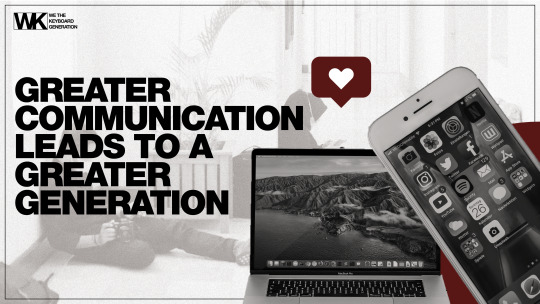
Conclusion
It is not enough to know and navigate technology; practice awareness and be responsible enough to put it to good use. As modern communicators, effective spotting and dissemination of factual and truthful information is the objective that will help generations to grow and prosper forward. If disinformation can spread in a matter of seconds, then so can the truth, justice, and factual information. Let Gen-Z be the role model of today's medium to a better and truthful society.
Greater communication leads to a greater generation. In the age of Information, ignorance became a choice. Let not history blind the upcoming generation. Practicing self-research and critical thinking is worthwhile and let knowledge be your weapon. While the world is still progressing forward, the present technologies and trained knowledge will evolve and multiply its degree to a more comprehensive cost. Moreover, the transmission of communication may develop into more complexities. Thus, learning to be responsible users must be practiced now for future generations to succeed. The more communication is used in the right way, the better the result reflects its present period; thus, affecting the future positively. The significant goal of communication is to cultivate truth, justice, and facts, and a sense of connections in the medium of communication.
References:
YPulse. (2020). This is how gen Z & millennials have changed activism. Retrieved from https://www.ypulse.com/article/2020/07/14/this-is-how-gen-z-millennials-have-changed-activism/
Biederman, A. et al. (2020). Meet gen Z activists: called to action in an unsettled world. Retrieved from https://apnews.com/article/climate-race-and-ethnicity-shootings-climate-change-school-violence-01673bd21da246ce942d1e98a08fc96f
Koulopoulos, T. Keldsen, D. (2014). Gen Z effect the six forces shaping the future of business. Retrieved from https://www.routledge.com/Gen-Z-Effect-The-Six-Forces-Shaping-the-Future-of-Business/Koulopoulos-Keldsen/p/book/9781629560311
Tyson, A. Kennedy, B. & Funk, C. (2021). Gen Z, millennials stand out for climate change activism, social media engagement with issue. Retrieved from https://www.pewresearch.org/science/2021/05/26/gen-z-millennials-stand-out-for-climate-change-activism-social-media-engagement-with-issue/
Luthra, A. & Dahiya, R. (2015). Effective leadership is all about communicating effectively: Connecting leadership and communication. Retrieved from https://www.mcgill.ca/engage/files/engage/effective_leadership_is_all_about_communicating_effectively_luthra_dahiya_2015.pdf
Kalamtime. (2021). Evolution of communication from ancient to modern times. Retrieved from https://www.kalamtime.com/blog/evolution-of-communication/
Everydaymentor. (N.D.). Social media/media literacy: Responsible use. Retrieved from https://everydaymentor.org/article/social-mediamedia-literacy-responsible-use/
2 notes
·
View notes
Text
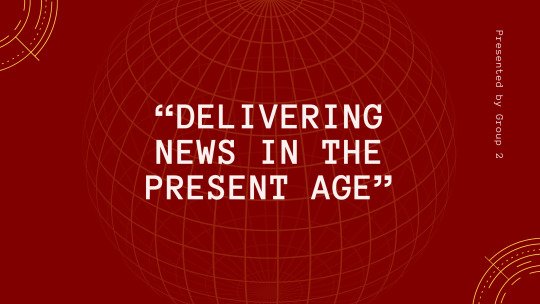
"Delivering news in the present age"
Have you ever wondered how much greater it is that the delivery of news in the present age has been revolutionized? Before we go any further into the present age of news delivery, let us first understand the distinction between the past and the present in terms of news delivery. In the past, the news was delivered through word of mouth, which was later replaced by a written medium known as a newspaper. Using a newspaper allows the news to travel a much longer distance. On the other hand, news delivery in the present has been modernized, which simply means that news is now distributed through mass media.

In the present age, the use of modern technologies and mass media has revolutionized the delivery of news. Because the old method of delivering news, such as the newspaper, is becoming obsolete and is being replaced in the modern age by articles on the internet, the emergence of modern technology makes the delivery of news much easier. Mass media can be print, radio, television, or Internet news, which makes finding news much easier than it used to be because their focus is much broader, though there are still some that are limited but sufficient to satisfy your interest. Some people still use printed media, such as newspapers, but only a small percentage of the population reads the news in newspapers. The majority of the population now listens to, watches and reads national and international news via radio, television, and the internet. However, in today's age of news delivery, accusations of mind control, bias, and poor quality have been leveled at the media on a regular basis. Fake news or accusations spread quickly on the internet, leaving the audience with uncertain information. This spread of misinformation can then cause chaos. Which is why in this modern age, people are thought to be aware and should be quick to spot misinformation or uncertain information when encountered. Gladly, with just one google search, sites can be found on how you can avoid these kinds of news.
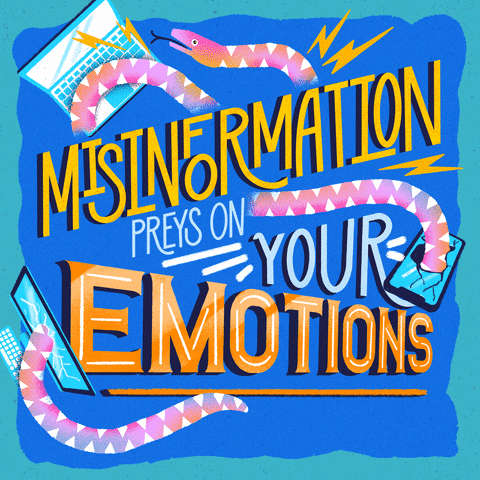
Overall, this rise of the media has been really great when it comes to the spread of information.What makes it great is that thanks to rapid technological developments, delivering news to the masses has become faster and more accessible. Nevertheless, despite all these good things that the rise of the media brings, it still poses great threats that could lead to quite some chaos. However, since the internet is still full of people with the full intention to help, a lot of sites can be accessed that could help us avoid being tricked by misinformation.
Citations:
How did news get around the world before the invention of newspapers and other media? (n.d.). Quora. Retrieved September 23, 2021, from https://www.quora.com/How-did-news-get-around-the-world-before-the-invention-of-newspapers-and-other-media
Molly Campbell, Bay College. (n.d.). The evolution of the media | american government. Lumen Learning. Retrieved September 25, 2021, from https://courses.lumenlearning.com/atd-baycollege-americangovernment/chapter/the-evolution-of-the-media/
2 notes
·
View notes
Text
"Delivering News in the Present Age"
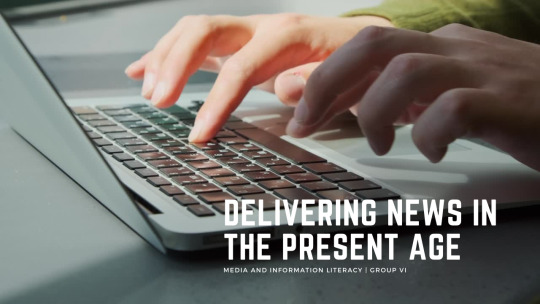
Blog #3
The days of waiting for current events in the morning newspaper or reading magazines for the celebrity gossip scoop are pretty much gone. In this current age, people receive a large portion of their needed data with a push of a button. The majority of the world’s population presently acquires their news information on the web, especially through online media. As a result, web-based media has outperformed conventional news sources as the essential wellspring of information. People are spurning customary media for platforms such as Twitter, Facebook, Instagram, Snapchat, and YouTube. Through the years, nothing much has changed in producing the news itself. There are still journalists and news writers that are in charge of garnering pieces of information. Some publish printed versions of their written works as well.
In any case, on account of the progressions and improvements that occurred over the long haul, the options of disseminating news have been augmented in a variety of ways. We currently have numerous electronic devices which will help spread the news at a higher pace compared to before; like through televisions, radios, or social media and websites. A rising amount of long-established media sources are looking into how the digital revolution has changed their economic methods. There are many ways to publish news stories, and you'll explore a variety of techniques for describing and writing to appeal to different audiences. Several sectors nowadays are striving to stay at pace with technical advancements, and most of the methods used by businesses to interact with their consumers have become obsolete. Though newspapers, magazines, and other printed media still exist in today's time, people most likely prefer holding onto their electronic devices. Most of them demand to have an immediate response to what they want to know, and that is why they are more reliant on their devices rather than tangent reading materials.
However, does the immediacy of information come with its accuracy?

The following are two of the most widespread issues with regards to delivering news:
Misinformation
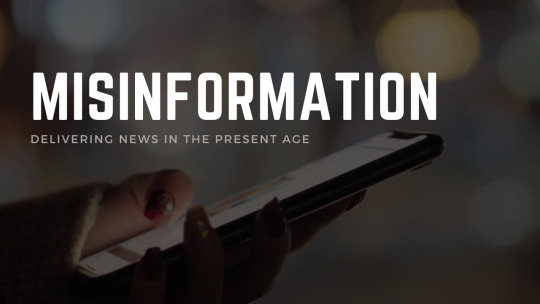
This is when a piece of false information is spread regardless of the purpose to mislead. An individual's absence of attention to his or her own work's precision is the primary root of this. Examples: incorrect captions, dates, figures, translations, or when a person considers a satire piece as legitimate.
Disinformation

This is when a piece of manipulated information is spread with the deliberate purpose to mislead. At the point when you know beyond all doubt that incorrect data is being circulated on purpose to harm something or someone, you are dealing with disinformation. Examples: audio/visual media that has been falsified or purposefully modified and speculations or accusations that were intentionally produced.
Fortunately, there are indications that one may set as a guide for the prevention of receiving such information.
When an article is reliable, it meets the following criteria:
It provides sufficient information.
The actual purpose and meaning of the article may be misunderstood due to an inadequacy of information.
It is based on facts.
A factual article might be characterized as something true; it is information that enables a truthful statement to be true. They can also be alternatively described as the things that an accurate assertion pertains to.
It is unbiased.
Avoidance of any deliberate deviation from the truth that occurs throughout the collecting and managing of information in an article is observed.
A reliable source is also required; one that presents a well-thought-out, well-supported hypothesis, position, or argument that has been handled fairly and lawfully based on solid evidence.
There are numerous advantages and disadvantages of delivering today’s news with the utilization of modern technology. The instantaneousness of data access makes it possible for people to deliver and gather information with a single click. However, one can’t deny the fact that the immediacy of these data pieces may cause a collection of false information. Alarming statements are posted every day, and people who tend to not take time in fact-checking are prone to believe inaccurate information. As a result, a division of people’s opinions occurs; arguing whether what they have read is a fact or fiction.
Nevertheless, as much as you put the effort in avoiding falsified information when it is being circulated, you must also remind yourself to exert an equal amount of effort in preventing yourself from disseminating such.
2 notes
·
View notes
Photo



3 notes
·
View notes